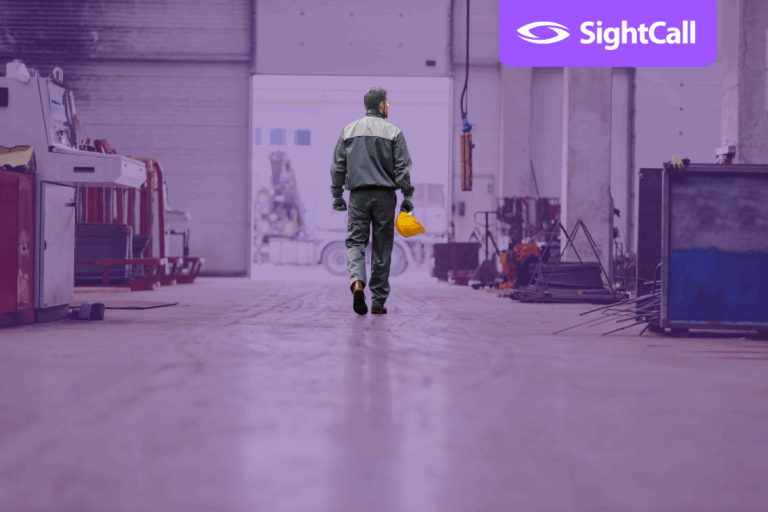Here’s a problem most field service leaders know all too well: a technician shows up to a job site only to discover they’re missing the right part—or worse, the right expertise.
The result? A second visit, a frustrated customer, and a service team that feels like it’s playing catch-up.
These are exactly the kinds of moments AI is built to prevent.
AI is no longer just a promising idea—it’s a working tool in the field, embedded into service workflows, helping leaders cut downtime, support technicians in real time, and improve customer outcomes across the board.
In fact, companies using AI to support field operations are seeing up to a 30% improvement in first-time fix rates, a metric that directly impacts cost, productivity, and morale.
At Field Service Palm Springs 2025, I had the opportunity to moderate a panel with leaders from industries as varied as telecom, manufacturing, safety, and supply chain logistics. Our goal was to explore the next level of AI—not just pilot projects or isolated wins, but scalable, reliable applications that solve real service problems.
What followed was a conversation packed with insight.
These were not blue-sky ideas. We talked about improving time-to-resolution, training AI on 3,000-page manuals, integrating AI into ticketing systems, and even tying remote diagnostics to service contract value.
But perhaps the most important takeaway was this: the companies leading the way with AI in field service aren’t treating it like magic—they’re treating it like a teammate.
And they’re seeing results because of it.
Here are three key themes and takeaways from that session—and a few of my own thoughts on how AI is helping shape the next era of service excellence.

Solving Real Service Problems: First-Time Fix, Uptime, and Field Morale
We started the session with a question I believe every service leader should ask: What problem are you trying to solve with AI?
Stephen, with Mettler Toledo, put it plainly: “Customer uptime is probably the most critical thing we can do. But we want to do that in the most cost-effective way for ourselves.”
That tension—between rising service expectations and the pressure to contain costs—is one that almost every organization is facing today.
His team is laser-focused on reducing unnecessary second visits, often caused by missing parts or skill gaps.
“If we do enough in the front end, we can send the right technician, with the right part, and get the job done the first time. That’s how we generate capacity organically—we’re not sending someone back to the same job twice.”
This isn’t just about numbers. It’s about pride.
“There’s nothing worse than going on site, starting the job, and realizing you can’t finish it,” Stephen said. “It impacts morale. Technicians want to do a good job. They feel it when they can’t.”
This resonated deeply with me. At SightCall, we’ve seen how empowering technicians with remote expertise and visual guidance dramatically boosts first-time fix rates.
But it also does something more subtle—it gives technicians the confidence and dignity they deserve.
Speed to Value and the ROI Conversation
From there, we explored how these initiatives translate into return on investment. It’s a complex subject, often made harder by the intangible nature of some AI benefits.
Clinten, whose company serves the waste optimization industry, emphasized the importance of focusing on the right outcomes.
“The CFO wants to see ROI,” he said, “but you also need to articulate the real-world problems you’re trying to fix.”
For them, reducing travel costs through remote support has been a significant win—saving both internal costs and customer expense.
Jeff, representing the fleet safety sector, framed it beautifully: “We’re not just saving lives and assets—we’re saving dreams.”
His AI-powered cameras detect fatigue, distraction, and risky driving behaviors in real time. This not only prevents accidents, but also strengthens compliance and reduces insurance costs.
I was particularly impressed by how Greg from Ciena broke down their approach. They began with their highest-volume product and used AI to improve time-to-resolution in their support center.
“We saw a direct correlation between case resolution time and CSAT scores,” he said. “That gave us the confidence to expand AI to other product lines.”
Greg also shared a great example of monetization: by offering remote diagnostics only to customers with service contracts, his team has turned AI into a value-added feature that helps sell more contracts and drive loyalty.
That’s what I call a win-win: better customer experience, more revenue, and greater operational efficiency.
From my perspective, this is a playbook more companies need to follow. AI should be tied to outcomes that matter—reducing downtime, improving fix rates, or driving contract value. And then we track those outcomes relentlessly.
That’s how you make the case not just to finance, but to the entire business.
Trust and Accuracy: The Human + AI Model
Perhaps the most nuanced part of the discussion was around trust. It’s one thing to deploy AI; it’s another to get people to use it, believe it, and benefit from it.
Clinten described how his team designed their workflows to keep humans in the loop.
“If a field tech is staring at a 3,000-page manual, AI can help them find the right section instantly. But if that doesn’t solve the issue, it escalates to a support engineer, who guides the AI.”
That hybrid model ensures quality, avoids rabbit holes, and builds user confidence over time.
Greg shared a similar journey at Ciena. Initially, they used AI internally to suggest knowledge articles: “Only after we saw accuracy improve did we expose those recommendations to customers—and even then, only from vetted articles.”
As a result, their case avoidance rate increased by over 10%, now hovering around 50%—a massive boost in efficiency.
Stephen offered an important caution: “AI can’t be a crutch. It has to be part of a blended approach. We still invest heavily in technician training. The app is there if you get stuck—but it’s not the first thing you reach for.”
I couldn’t agree more. AI is not a shortcut—it’s a multiplier.
But to multiply human skill, you need a strong baseline. That’s why I’m a big believer in “human-first AI.”
We must keep our subject matter experts, trainers, and field leaders involved—not just in reviewing content, but in shaping how AI is deployed and continuously improved.
A Roadmap for Responsible Innovation
What made this panel so valuable was the honesty.
No one claimed to have all the answers. But they’re asking the right questions. They’re starting small, measuring carefully, and building systems that balance efficiency with empathy.
At SightCall, we work with organizations every day who are figuring this out in real time. The ones that succeed have a few things in common:
- They start with the problem, not the tech.
- They measure what matters—fix rate, CSAT, uptime—not vanity metrics.
- They invest in people just as much as in platforms.
- And they stay agile—ready to pivot, improve, and learn.
As I said to our audience in Palm Springs, “AI isn’t here to replace technicians—it’s here to support them. When we design with that mindset, we unlock not just better service—but better organizations.”
Thanks to everyone who joined the discussion. And if you’re on your own AI journey in field service, I’d love to hear what you’re learning.
Field Service Palm Springs 2025: Panel Discussion (April 22)
Taking AI to the Next Level: Ensuring Accuracy and Speed to Value to Solve Real Service Problems
- Stephen Goulbourne, Global Program Director – Global Service, Mettler Toledo
- Greg Friesen, VP & General Manager, Global Services, Ciena
- Jeff Martin, VP of Global Sales Strategy, Lytx
- Clinten van der Merwe, SVP, Head of Global Service and Project Mgmt., TOMRA Recycling
- Jeff Nieze, VP Solution Strategy, Baxter Planning




